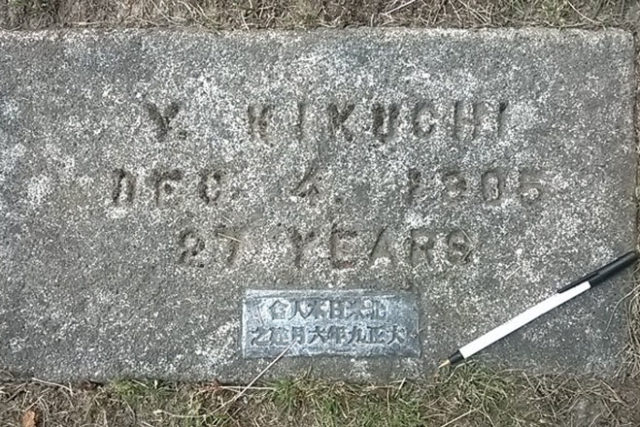



As a student of local Japanese- American history, there are places that I bring people, now and then, to show them and to help them grasp it. My “short list” here includes three well-known destinations: the Panama Hotel coffee shop—which displays the most extensive collection of photos of Issei family businesses in Seattle; the Japanese Cultural and Community Center of Washington—on the site of the Seattle Japanese Language School that figures prominently in Seattle JA literature; and Kubota Gardens. The gardens are the best place I know for illustrating the physical dimensions of what one person with one dream can accomplish.
For people interested in learning more, I bring them to Lake View Cemetery on Capitol Hill. There, the Japanese section occupies the west half of the northeast quarter of the grounds. From the entrance, one drives straight in and passes a non-public maintenance road on the right. Then, take the next right and continue straight toward the north fence until the great obelisk of Nisei and Sansei war dead comes into view on the right. Park near the side of the road and walk the grounds from there.
The obelisk is self-explanatory.
More of interest here are the surrounding grave markers for individual civilians. These include:
(a) Undated graves written only in Japanese, by immigrant Issei [the first generation] for fellow Issei, not yet thinking that later generations would need to read the stones in English.
(b) The oldest dated graves; also written only in Japanese.
(c) Pauper’s graves; marked with flat concrete markers, some now scarcely legible.
Among the latter, what strikes one are the many graves of young men, in their 20s and 30s. According to Kazuo Ito’s Issei (1973), the men were mostly railroad workers who died in accidents.
Throughout, it is also impossible to ignore the many markers for young children. Here, an Issei quoted in the Ito’s book blames the lack of vaccines.
The oldest grave I found, after about 20 minutes, is that of child “Miye Osawa” from 1895. It is near the right-turn one makes on entering the Japanese section.
I would be remiss if I did not mention the markers of a few notables buried at Lake View.
In the section, I was saddened to see the marker for “Martha Nishitani, 1920-2014,” along the access road between the right-hand turn and the obelisk. I remember the name of the modern-dance teacher from the door of her studio on University Way. While I did not know Ms. Nishitani, it is hard not to like her exuberant photos on the web.
A visit to Lake View is incomplete without also visiting the graves of kung-fu superstar Bruce Lee and his son Brandon, which overlook a commanding view near the center of the cemetery. From the Japanese section, walk uphill to the southwest, looking for a huge “white heart” monument for an unrelated, beloved Chinese daughter who passed away too soon. The Lees’ headstones are just upslope of the heart.
Of Lake View Cemetery, an Issei poet wrote:
“Cherry-blossom quilt
Wrapping the cemetery
On Capitol Hill.”
(“Sanyo;” Issei, p. 883)






